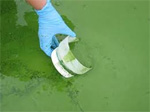Visit https://www.naylornetwork.com/cww-nwl/articles/index.asp?aid=369599&issueID=40424 to view the full article online.
|
Visit https://www.naylornetwork.com/cww-nwl/articles/index.asp?aid=369473&issueID=40424 to view the full article online.
Visit https://www.naylornetwork.com/cww-nwl/articles/index.asp?aid=369514&issueID=40424 to view the full article online.
|
Visit https://www.naylornetwork.com/cww-nwl/articles/index.asp?aid=369490&issueID=40424 to view the full article online.
|
Visit https://www.naylornetwork.com/cww-nwl/articles/index.asp?aid=369580&issueID=40424 to view the full article online.
Visit https://www.naylornetwork.com/cww-nwl/articles/index.asp?aid=369611&issueID=40424 to view the full article online.
|
Visit https://www.naylornetwork.com/cww-nwl/articles/index.asp?aid=369438&issueID=40424 to view the full article online.
|
Visit https://www.naylornetwork.com/cww-nwl/articles/index.asp?aid=369449&issueID=40424 to view the full article online.
|
Visit https://www.naylornetwork.com/cww-nwl/articles/index.asp?aid=369616&issueID=40424 to view the full article online.
|
Visit https://www.naylornetwork.com/cww-nwl/articles/index.asp?aid=369440&issueID=40424 to view the full article online.
|
Visit https://www.naylornetwork.com/cww-nwl/articles/index.asp?aid=369472&issueID=40424 to view the full article online.
|
Visit https://www.youtube.com/watch?v=MjzZsmNoO3Y&feature=youtu.be to view the full article online.
|
Visit https://www.naylornetwork.com/cww-nwl/articles/index.asp?aid=369471&issueID=40424 to view the full article online.
|
Visit https://www.naylornetwork.com/cww-nwl/articles/index.asp?aid=369455&issueID=40424 to view the full article online.
|
Visit http://wcw16.wcwwa.ca/ to view the full article online.
|
|
Water Canada
The City of Mississauga’s new stormwater levy will begin to appear on Region of Peel water bills for Mississauga properties in March. The stormwater charge amount that will appear on the bill is based on the daily rate for the property, applied since January 1, 2016. Visit http://watercanada.net/2016/city-of-mississaugas-new-stormwater-charge-to-appear-on-bills-in-march/ to view the full article online. |
|
Water Canada
Clearford Water Systems Inc. has won the Ontario Onsite Wastewater Association’s 2016 Corporate Innovation Award, at OOWA’s 17th Annual Conference held in Kingston last week. The award was presented to Clearford in recognition of its innovative Pay for Performance (P4P) financing model. Visit http://watercanada.net/2016/clearford-water-systems-inc-winner-of-ontario-onsite-wastewater-association-for-innovating-financing-model/ to view the full article online. |
|
Winnipeg free press
Dentist Larry Levin has made his pitch about the importance of adding fluoride to drinking water several times in recent years to city councils voting on the controversial issue. He has won some and lost some. Levin, a past president and current vice-president of the Canadian Dental Association, believes more communities are deciding against fluoridation. Visit http://www.winnipegfreepress.com/canada/to-fluoridate-or-not-to-fluoridate-municipalities-drinking-up-water-debate-371548041.html to view the full article online. |
|
AWE
Lessons learned during Australia’s worst drought on record are helping California through its own water crisis. A new report released today shows that strategies developed and mistakes made during Australia’s decade-long millennium drought provide a powerful resource for California, as the state enters its fifth year of severe drought. Visit http://www.allianceforwaterefficiency.org/AWE-Australia-Drought-Report.aspx to view the full article online. |
|
The treatment of municipal wastewaters in small northern communities across Canada can be challenging because of harsh climatic conditions, difficult logistical and operational circumstances, competing demands on limited financial resources, and challenges associated with staffing treatment plants in remote communities. These communities are reliant on lagoon systems as a primary method for wastewater treatment.
Visit http://watercanada.net/2016/using-tundra-wetlands-to-treat-municipal-wastewater-in-canadas-far-north/ to view the full article online. |
|
siwi.org
Professor Joan Rose of the USA is named the 2016 Stockholm Water Prize Laureate for her tireless contributions to global public health: in assessing risks to human health in water and creating guidelines and tools for decision-makers and communities to improve global health. Visit http://www.siwi.org/prizes/stockholmwaterprize/laureates/2016-2/ to view the full article online. |
|
WaterAid Canada
To celebrate World Plumbing Day, the Canadian Institute of Plumbing and Heating (CIPH) has awarded WaterAid Canada with the inaugural National Water Wise Award. This marks the beginning of a new awards program developed to recognize outstanding efforts to improve our relationship with water. Visit https://www.wateraidcanada.com/news-item/wateraid-canada-tapped-by-ciph-to-take-home-inaugural-national-water-wise-award/ to view the full article online. |
|
Government of Newfoundland & Labrador
The Department of Environment and Conservation honoured two municipal water operators for their services with Water Operator of the Year Awards. Dale Walsh from the Town of Bay de Verde and Harold Legge from the No’kmaq Village (Flat Bay Band) received the awards today during the 15th Annual Clean and Safe Drinking Water Workshop in Gander. Visit http://www.releases.gov.nl.ca/releases/2016/env/0324n02.aspx to view the full article online. |
|
Canadian Underwriter
The province of British Columbia has announced $16.6 million in funding toward a flood mitigation project in Richmond that will upgrade multiple pump stations. Visit http://www.canadianunderwriter.ca/insurance/province-british-columbia-announces-16-6-million-funding-flood-mitigation-project-richmond-1004087751/ to view the full article online. |
|
Northern Life
The City of Sudbury has decided how it's going to spend the $2.3-million provincial grant it received late last month for nine watershed studies over the next two years. Ramsey Lake, a main source of drinking water in the city, was already announced as the first to be studied. Meeting Tuesday, city council named the other eight: seven watersheds along Junction Creek, as well as Whitewater Lake in Azilda. Visit http://www.northernlife.ca/news/localNews/2016/03/24-watershed-studies-sudbury.aspx to view the full article online. |
|
Barrie Examiner
Barrie has new 'drinking water protection zone' road signs, which are the new provincial standard. The city says they're to create public awareness that certain activities in these areas can have an impact our water supplies. The signs will be placed within the most vulnerable source water areas - near municipal wells and areas around surface water intakes - during the next few weeks. Visit http://www.thebarrieexaminer.com/2016/03/22/barrie-among-first-to-have-new-signs to view the full article online. |
|
CBC
Canada's crumbling infrastructure is expected to be at the forefront of Tuesday's federal budget. Topping the list of the Liberals' campaign promises is $60 billion over 10 years for infrastructure projects — nearly double what the previous Harper government planned to spend. Visit http://www.cbc.ca/news/canada/nova-scotia/infrastructure-halifax-sewage-unsexy-trudeau-spending-1.3500799 to view the full article online. |
|
The Globe & Mail
A passing mention by Montreal’s mayor that plastic-bottled water is next on the city’s environmental to-do list has caught the industry’s attention. After moving to ban plastic bags by 2018, Mayor Denis Coderre hasn’t announced any firm game plan on the bottle issue. "But the debate is important," Coderre said recently. "We need to have that debate on plastic." Visit http://www.theglobeandmail.com/news/national/montreal-mayor-puts-bottled-water-ban-on-to-do-list/article29309099/ to view the full article online. |




















